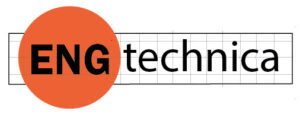Would you fly in an airplane that AI created? As an engineer in awe of what fellow engineers have done to get an aircraft in the air and back down safely, my gut reaction is: definitely not. But after a momentary reflection of Boeing’s safety issues (Why Boeing’s Top Airplanes Keep Falling, New York Times, Feb 12,2024 and Downfall: The Case Against Boeing, Netflix, 2022, just two of many worrisome reports), I am willing to give AI a try.
Enter PhysicsX, a UK-based startup that promises a “quantum leap” with its software that blends AI with shape optimization.

PhysicsX showcases its technology in AI.airplane, a free online app that lets you design aircraft. You may not be able to design an aircraft down to its rivets nor create an aircraft of any commercial or military value, but you can have a lot of fun pretending to do real simulations on unreal aircraft.
AI.airplane will evaluate the overall shape for its lift, drag, stability and stresses, though that be the gross exterior shape only.
Granted the shapes are rudimentary, even playful – not the stuff of serious commercial or military aircraft. Nor is that PhysicsX’ intent. To use AI.airplane, you must sign off on the terms of service which state “Output may not always be accurate. Our Services are provided for technology demonstration and You should not rely on Output from our Services as a reliable source to create real outputs.“
In other words, don’t try this at work. It’s intended for hobbyists, for toys. Maybe you could use it for conceptual design. But it is not to be used for accurate, detail design of any type.
That being said, what a lot of fun AI.airplane can be.
Enter the weight of the aircraft and AI. airplane presents 20 possible shapes, each a deformable mesh that behaves like a sub-D model. You can deform it by pushing and pulling on deformable points. In a twinkling, you get what appear to be realistic pressure gradients (highest at nose and where wings meet the fuselage). Stresses are also highest where you would expect them to be.
How is PhysicsX’ so fast? AI.airplane’s speed and seeming accuracy are indeed remarkable. It is most certainly not painting colors for effect, a common marketing trick.
PhysicsX is, in effect, cheating. To put it more mildly, it is making an educated guess.
AI.airplane is a technology demonstrator, a publicly available app based on LGM-Aero. LGM stands for large geometry model, which is to shapes what large language models (LLMs, like ChatGPT) are for language.
LGM-Aero is trained on 25 million meshes and “tens of thousands” CFD and FEA simulations generously supplied by Siemens’ Simcenter, according to the company’s announcements. This is what is known in the AI world as unsupervised machine learning. In theory, if done well and if the shapes and conditions are similar from one to the next, the AI-based application can forego the millions of calculations FEA and CFD require and make an educated guess as to the result.
Having gone public with aircraft design has created tremendous buzz for PhysicsX. It may just be the shape of things to come. PhysicsX plan is to apply itself to more than just aerospace. It has already been used in automotive and has its sights on chip design, renewable energy and material research.

